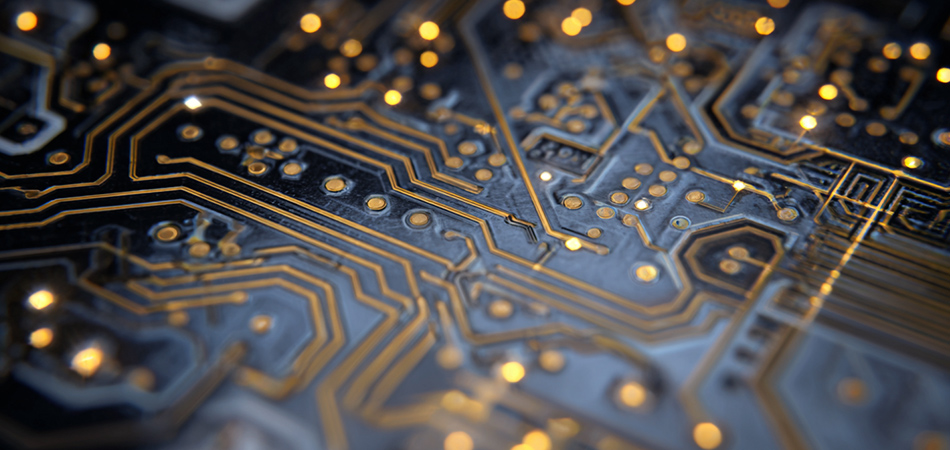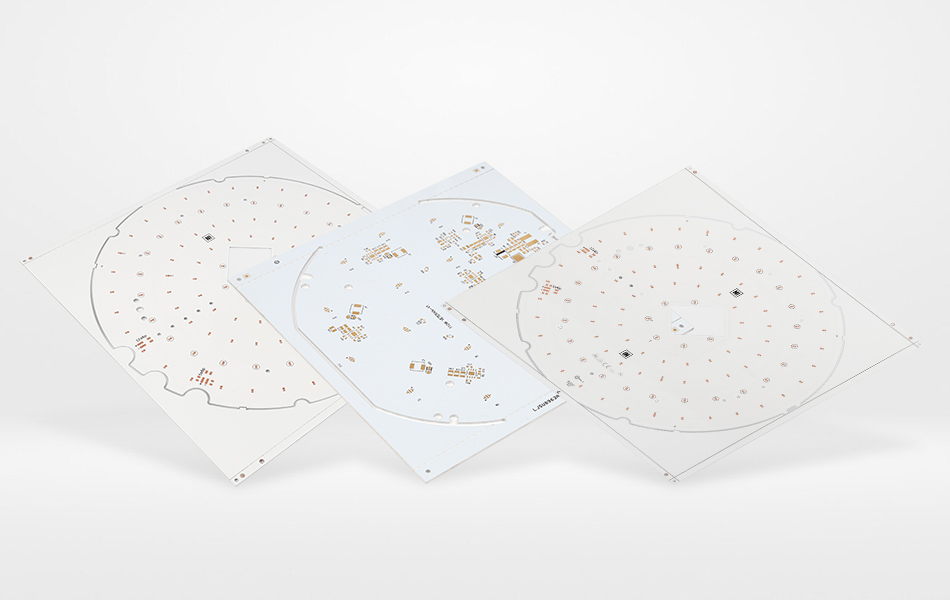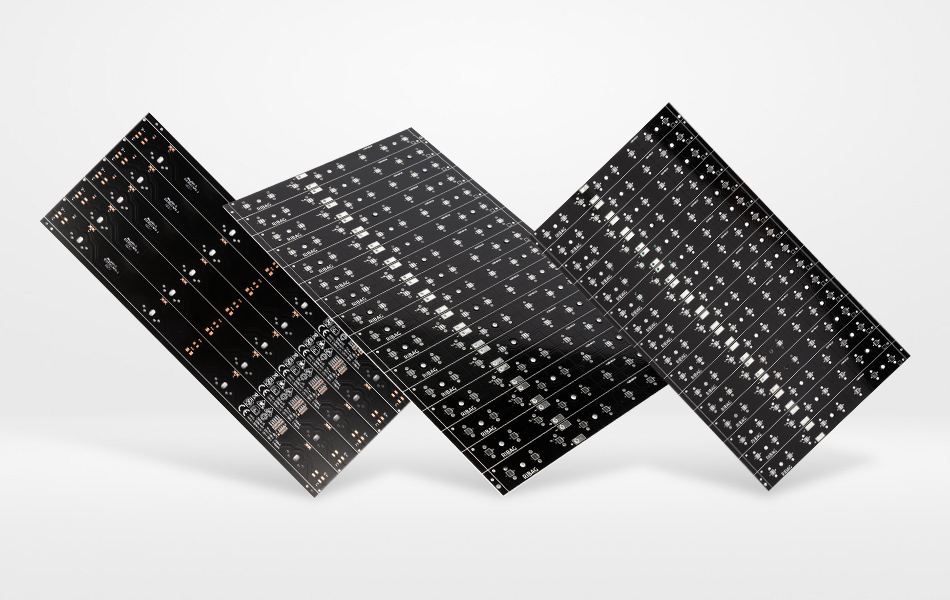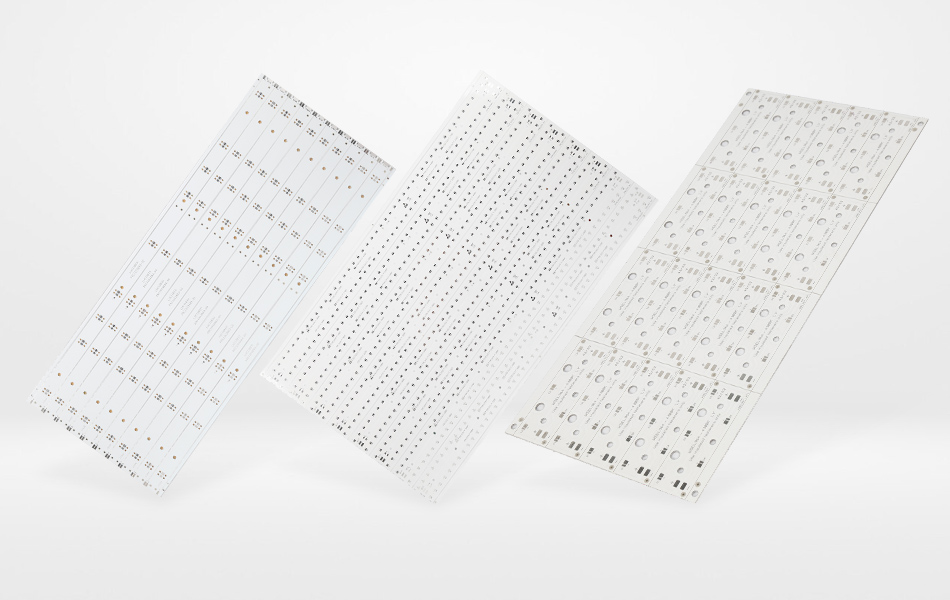-
- PCB TYPE
- PRINTED CIRCUIT BOARD PROTOTYPE ALUMINUM PRINTED CIRCUIT BOARD R&F PCB FPC HIGH FREQUENCY PCB HIGH-TG PCB HEAVY COPPER PCB HDI PCB PCB FOR LIGHTING METAL CORE PCB
time:Jun 21. 2025, 09:27:57
In the dynamic realm of electronics, Printed Circuit Boards (PCBs) serve as the backbone for countless devices, facilitating the intricate dance of electrical signals and power distribution. Among the diverse PCB technologies, Multi - Layer Aluminum PCBs have emerged as a revolutionary force, combining the benefits of multiple circuit layers with the superior thermal and mechanical properties of aluminum. As the demand for more compact, powerful, and reliable electronic systems continues to surge, these PCBs are at the forefront of enabling next - generation applications. This article will comprehensively explore Multi - Layer Aluminum PCBs, covering their structure, design principles, manufacturing processes, applications, market trends, and future prospects.
Decoding the Structure of Multi - Layer Aluminum PCBs
Layer Configuration and Functionality
A Multi - Layer Aluminum PCB typically consists of alternating layers of copper and dielectric materials, with an aluminum core integrated into the stack - up. The copper layers act as the arteries of the PCB, carrying electrical current and facilitating signal transmission. These layers are meticulously patterned with traces, pads, and planes, forming the intricate circuitry that connects various electronic components.
Sandwiched between the copper layers are dielectric materials, which serve as insulators, preventing unwanted electrical conduction between the copper layers while allowing electromagnetic signals to pass through. The selection of dielectric materials is crucial, as their properties, such as dielectric constant and dissipation factor, directly impact signal integrity and overall electrical performance.
The aluminum core, positioned strategically within the PCB structure, is a key differentiator. Its high thermal conductivity makes it an efficient heat sink, capable of rapidly dissipating heat generated by power - hungry components. Additionally, the aluminum core provides mechanical strength and stability, enabling the PCB to withstand harsh environmental conditions and mechanical stress.
Advantages over Single - Layer and Traditional Multi - Layer PCBs
Compared to single - layer PCBs, Multi - Layer Aluminum PCBs offer enhanced design flexibility. The multiple copper layers allow for more complex circuit routing, reducing the need for large, cumbersome traces on a single layer. This results in a more compact PCB layout, which is essential for miniaturizing electronic devices. Moreover, the ability to separate power and ground planes across multiple layers helps in minimizing electromagnetic interference (EMI) and improving signal integrity.
When contrasted with traditional multi - layer PCBs that use non - metallic cores, Multi - Layer Aluminum PCBs have a significant edge in thermal management. The aluminum core efficiently absorbs and spreads heat, preventing hotspots that can degrade component performance and shorten the lifespan of the device. This makes Multi - Layer Aluminum PCBs ideal for applications where high - power components are in use and effective heat dissipation is non - negotiable.

Design Principles for Multi - Layer Aluminum PCBs
Thermal Design
Component Placement and Heat Flow Optimization
In the design of Multi - Layer Aluminum PCBs, strategic component placement is paramount for effective thermal management. Heat - generating components should be positioned to maximize heat transfer to the aluminum core. This may involve placing them directly adjacent to the core or using thermal vias to create direct pathways for heat to flow from the components to the core. Components can also be grouped based on their heat - generation levels, with high - heat components placed in areas with better heat - dissipation capabilities, such as near ventilation openings or heat - sink attachment points.
Thermal Via Design and Heat Dissipation Enhancement
Thermal vias play a crucial role in facilitating heat transfer within Multi - Layer Aluminum PCBs. These are small holes filled with highly conductive materials, typically copper, that connect different layers of the PCB and the aluminum core. The design of thermal vias, including their size, quantity, and distribution, needs to be carefully optimized according to the heat - generating characteristics of the components and the overall thermal requirements of the design. By strategically placing thermal vias, designers can enhance the efficiency of heat transfer, ensuring that heat is effectively conducted away from critical components and dissipated into the surrounding environment.
Electrical Design
Trace Routing and Signal Integrity Assurance
Trace routing in Multi - Layer Aluminum PCBs requires a meticulous approach to ensure signal integrity. With multiple layers available for routing, designers have more flexibility, but also face the challenge of managing impedance, crosstalk, and signal attenuation. For high - speed signals, impedance - controlled traces are often necessary. Designers must carefully calculate trace width, length, and spacing, as well as consider the dielectric properties of the insulating layers, to achieve the desired impedance values and minimize signal reflections. Specialized design software is frequently employed to simulate signal behavior and optimize trace routing for optimal performance.
Power and Ground Plane Design
Power and ground plane design is a critical aspect of the electrical design of Multi - Layer Aluminum PCBs. The multi - layer structure allows for the creation of dedicated power and ground planes, which help in evenly distributing electrical power across the board and reducing EMI. Well - designed power and ground planes can also improve the stability of the electrical supply, ensuring that components receive a consistent voltage. Designers need to ensure that these planes are continuous, with minimal splits or gaps, and that proper grounding techniques are implemented to enhance the overall electrical performance of the PCB.
Design for Manufacturability
To ensure smooth and efficient production, Multi - Layer Aluminum PCB designs must adhere to the principles of design for manufacturability (DFM). Designers need to take into account factors such as the minimum achievable trace width and spacing, the maximum aspect ratio for vias, and the ease of component placement and soldering. By optimizing the design for manufacturability, potential manufacturing issues can be avoided, production costs can be reduced, and the time - to - market can be shortened. This may involve simplifying complex circuit layouts, using standard component footprints, and ensuring compatibility with the manufacturing equipment and processes of the PCB fabricator.

Manufacturing Processes of Multi - Layer Aluminum PCBs
Material Selection
The manufacturing process of Multi - Layer Aluminum PCBs commences with the careful selection of materials. High - quality copper foils are chosen for the electrical layers, ensuring excellent electrical conductivity and reliable signal transmission. The dielectric materials used between the copper layers are selected based on their electrical insulation properties, thermal stability, and ability to support high - density circuit designs.
For the aluminum core, high - purity aluminum sheets with consistent thickness and superior thermal conductivity are preferred. Additionally, specialized adhesives and prepregs are employed to bond the layers together, ensuring a strong and reliable structure that can withstand the rigors of the manufacturing process and the operational demands of the end - product.
Lamination
Lamination is a crucial step in the manufacturing process, where the individual layers of the PCB are bonded together. Heat and pressure are applied to cure the adhesives and prepregs, creating a cohesive and stable structure. Precise control of lamination parameters, such as temperature, pressure, and time, is essential to ensure a uniform bond and avoid defects such as voids, delaminations, or uneven bonding. Any imperfections in the lamination process can have a significant impact on the electrical and thermal performance of the final PCB.
Drilling and Plating
After lamination, drilling is carried out to create holes for vias, component mounting, and electrical connections. High - precision drilling machines are utilized to ensure accurate hole placement and clean hole walls. Following drilling, the holes are plated with copper to create electrical connections between the different layers of the PCB and to provide a solderable surface for component attachment. The plating process, typically electroplating, requires careful control of parameters such as current density, plating time, and temperature to achieve a uniform and reliable copper deposit.
Circuit Patterning
Circuit patterning is the process of creating the electrical circuits on the copper layers. Photolithography is commonly employed for this purpose. A photosensitive resist material is applied to the copper surface, and then a patterned mask is used to expose the resist to ultraviolet (UV) light. The exposed areas of the resist are chemically altered and removed during the development process, leaving the unexposed resist in the shape of the circuit pattern. The remaining copper is then etched away using an etching solution, leaving only the copper traces and planes that form the electrical circuits.

Applications of Multi - Layer Aluminum PCBs
Consumer Electronics
In the consumer electronics sector, Multi - Layer Aluminum PCBs are widely utilized in devices such as smartphones, tablets, laptops, and gaming consoles. These devices demand PCBs that can support a high density of components, handle complex electrical requirements, and manage heat efficiently. The compact design and excellent thermal management of Multi - Layer Aluminum PCBs enable the creation of sleek, powerful devices that can operate for extended periods without overheating, enhancing the user experience.
Telecommunications
The telecommunications industry relies on Multi - Layer Aluminum PCBs for base stations, routers, switches, and other network equipment. These applications require PCBs that can handle high - speed data transfer, complex signal processing, and efficient power management. The multi - layer structure of these PCBs allows for better trace routing and impedance control for high - speed signals, while the aluminum core helps in dissipating the heat generated by high - power components, ensuring stable and reliable network operation.
Aerospace and Defense
Aerospace and defense applications demand PCBs that can perform reliably in extreme environments. Multi - Layer Aluminum PCBs are well - suited for these applications due to their high thermal conductivity, mechanical strength, and ability to support complex electrical circuits. They are used in aircraft avionics systems, satellite communication equipment, military radar systems, and missile guidance systems, where the ability to manage heat effectively, maintain signal integrity, and withstand harsh conditions is crucial for mission sucIndustrial Automation
In industrial automation, Multi - Layer Aluminum PCBs are employed in control systems, programmable logic controllers (PLCs), and robotic devices. These applications require PCBs that can operate reliably in harsh industrial environments, characterized by high temperatures, vibrations, and electrical noise. The thermal and mechanical properties of Multi - Layer Aluminum PCBs make them ideal for these demanding applications, ensuring the continuous and efficient operation of industrial equipment.

Market Dynamics of Multi - Layer Aluminum PCBs
Market Growth
The global market for Multi - Layer Aluminum PCBs has been experiencing robust growth in recent years, and this trend is expected to continue. The increasing demand for portable and high - performance electronics, the growth of the telecommunications infrastructure, and the advancements in aerospace, defense, and industrial automation are all significant drivers of market growth. As more industries seek to enhance the performance and reliability of their electronic systems, the demand for Multi - Layer Aluminum PCBs is likely to expand further in the coming years.
Competitive Landscape
The market for Multi - Layer Aluminum PCBs is highly competitive, with numerous manufacturers vying for market share. Key players in the market include both established PCB manufacturers with extensive experience and emerging companies that are introducing innovative technologies and manufacturing processes. Competition is based on factors such as product quality, performance, cost - effectiveness, technological innovation, and customer service. Manufacturers are constantly investing in research and development to improve the performance of their PCBs, reduce production costs, and offer customized solutions to meet the specific requirements of different customers and industries.

Challenges and Future Trends
Challenges
Despite their many advantages, the Multi - Layer Aluminum PCB industry faces several challenges. One of the primary challenges is the cost. The use of high - quality materials, complex manufacturing processes, and advanced design techniques can result in relatively high production costs. Additionally, as electronics continue to evolve towards smaller form factors and higher levels of integration, the design and manufacturing of Multi - Layer Aluminum PCBs become more complex, requiring more advanced design tools and skilled engineers.
Ensuring consistent quality during mass production is another significant challenge. The high - density nature of these PCBs makes it more difficult to detect and correct manufacturing defects, which can impact the performance and reliability of the final products. Moreover, fluctuations in the prices of raw materials, such as copper and aluminum, can also pose challenges to cost management and profitability.
Future Trends
The future of Multi - Layer Aluminum PCBs is filled with exciting prospects. Advancements in materials science are expected to lead to the development of new copper alloys, dielectric materials, and aluminum composites with enhanced electrical, thermal, and mechanical properties. These new materials will further improve the performance of Multi - Layer Aluminum PCBs, enabling the creation of even more compact, powerful, and energy - efficient electronic devices.
The integration of emerging technologies, such as 5G, the Internet of Things (IoT), artificial intelligence (AI), and autonomous systems, will create new opportunities for Multi - Layer Aluminum PCBs. These technologies will require PCBs that can support high - speed data transfer, complex signal processing, and intelligent thermal management, which are the key strengths of Multi - Layer Aluminum PCBs.
The adoption of advanced manufacturing technologies, such as additive manufacturing, automation, and robotics, is also set to revolutionize the production of Multi - Layer Aluminum PCBs. Additive manufacturing could enable more complex and customized designs, while automation will improve production efficiency, reduce costs, and enhance quality control. Furthermore, the growing focus on environmental sustainability will likely drive the development of more eco - friendly manufacturing processes and materials for Multi - Layer Aluminum PCBs, making them more attractive in the market.
Conclusion
Multi - Layer Aluminum PCBs have emerged as a game - changing technology in the electronics industry, offering a unique combination of advanced circuit design, superior thermal management, and reliable electrical performance. Their applications span across a wide range of industries, driving innovation and enabling the development of cutting - edge electronic systems. While facing challenges related to cost, complexity, and quality control, the future of Multi - Layer Aluminum PCBs is bright, with ongoing advancements in materials, manufacturing, and emerging technologies presenting numerous opportunities for growth and innovation. As the electronics industry continues to evolve, Multi - Layer Aluminum PCBs will undoubtedly play an increasingly important role in shaping the future of technology.

Got project ready to assembly? Contact us: info@apollopcb.com



We're not around but we still want to hear from you! Leave us a note:

Leave Message to APOLLOPCB
